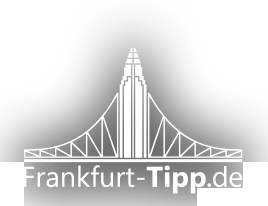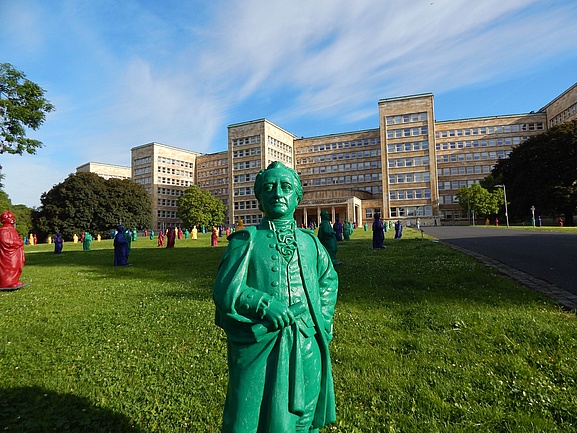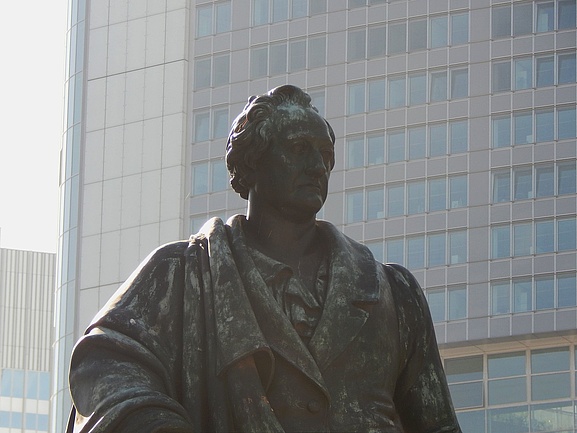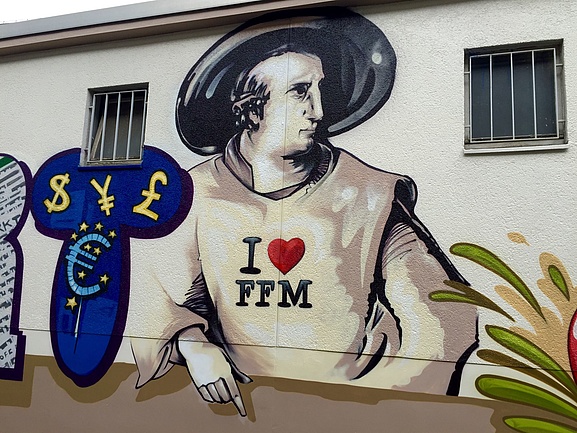But Goethe preferred to devote himself to his first drama and wrote some poems. He also collaborated on the critical organ of the Sturm-und-Drang movement, the "Frankfurter gelehrten Anzeigen".
With his first novel "The Sorrows of Young Werther" and the drama "Götz von Berlichingen" (both published in 1774), the 24-year-old Goethe achieved his literary breakthrough.
In 1775 he followed the call of the young Duke Carl August to the Weimar court, where he took on political duties (in finance, mining and road construction). Later he was offered the direction of the theatre and the supervision of education.
In Weimar Goethe became friends with Charlotte von Stein (1742-1827), to whom he wrote more than eight hundred letters over the years.
In 1776 he was appointed privy legation councillor, in 1779 privy councilor, and in 1782 Goethe was ennobled by Emperor Joseph II.
In September 1786 he made his first trip to Italy. In Rome he visited the painters Tischbein (who painted one of the most famous portraits of the poet "Goethe in the Campagna") and Kauffmann.
It was not until June 1788 that Goethe returned to Weimar, where he became engaged to Christiane Vulpius, whom he also married in 1806.
Of the five children from this union, only the first-born August (1789-1830) survived.
Goethe gave up all state offices except the directorship of the court theatre. His second trip to Italy followed in 1790.
The period thereafter is marked by his collaboration with Schiller. The two developed a style that became known as Weimar Classicism.
After the deaths of Herder, Schiller, and Wieland, Goethe made new friends, including Humboldt, and became involved with Fichte's transcendental philosophy.
In 1804 Goethe was appointed Wirklicher Geheimen Rat.
At the Erfurt Congress of Princes, Goethe met Napoleon in 1808. In the same year he published the first part of Faust.
In 1812, during a stay at a spa in Karlsbad, he met the composer Beethoven.
In 1815 Goethe made extensive travels in the Rhine-Main area. He spent the period from 12 August to 17 September 1815 with the married Marianne von Willemer in Frankfurt.
In December 1815 Goethe was entrusted with the office of minister of state.
After the death of his wife Christiane (June 6, 1816), Goethe withdrew from Weimar social life and turned to his works.
Goethe spent the last decade of his life working on "Wilhelm Meisters Wanderjahren", "Italienische Reise", his autobiography "Dichtung und Wahrheit", and especially Faust, der Tragödie zweiter Teil, which he finished in 1831.
On March 22, 1832, Johann Wolfgang von Goethe died at the age of 82. His last words are said to have been "More light!"
On March 26, he was buried next to Schiller in the Weimar princely crypt.
His most important works:
Goetz von Berlichingen (1774)
The Sorrows of Young Werther (1774)
Iphigenia on Tauris ((1786)
Egmont (1788)
Torquato Tasso (1789)
Wilhelm Meisters Lehrjahre (1796)
Faust, 1. Part (1806)
Poetry and Truth (Memoirs Parts 1-3 1811-13, 1830 Part 4)
Italian Journey, Parts One and Two (1816)
West-Eastern Divan (1819)
Wilhelm Meisters Wanderjahre (1829)
Faust, 2nd part. Part (1831)











